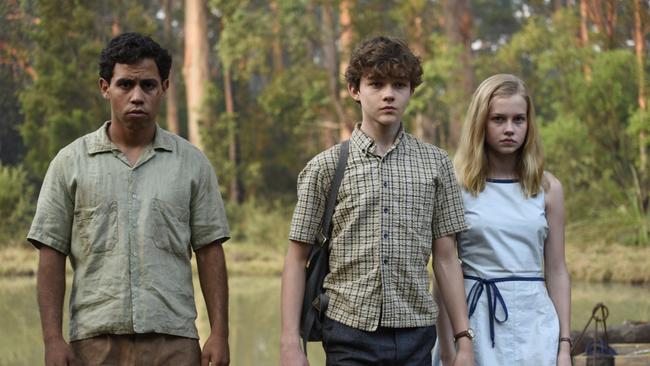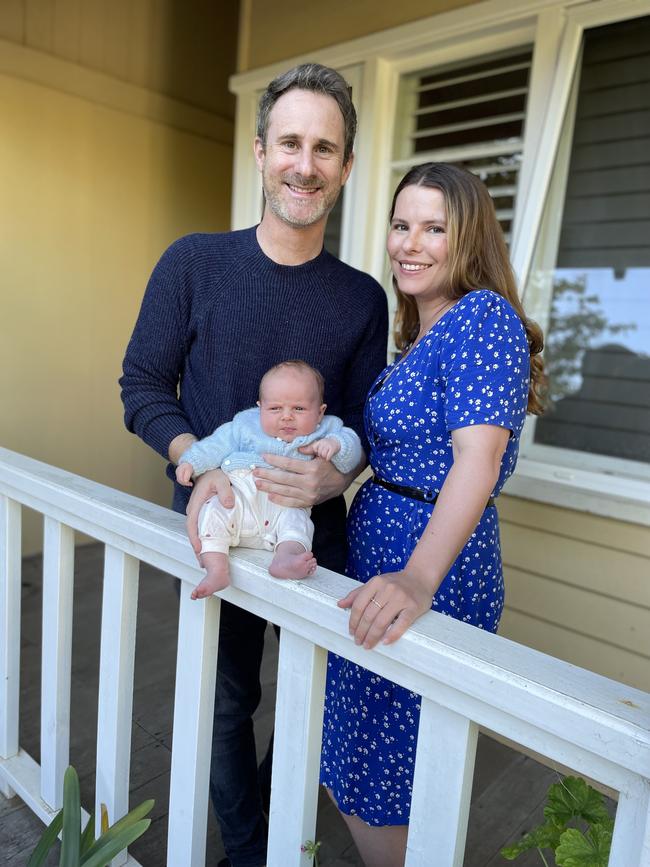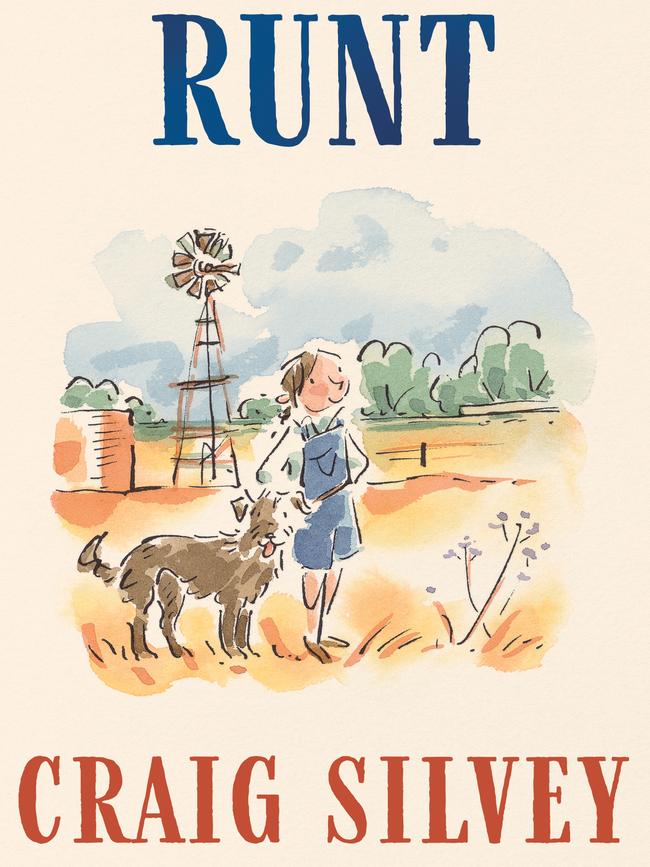Tiny but mighty: Craig Silvey on Runt
New dad Craig Silvey on his new novel, Runt, in which small people (and one small dog) show the value of having a big heart.

Craig Silvey’s new novel, Runt, is about a girl and a dog.
Annie is 11, Runt is three, and each is short for their age. Runt is not only small but imperfectly formed: “Maybe kelpie. Maybe heeler. Maybe shepherd. Maybe terrier. Maybe all of them. Maybe none of them.”
He’s a stray nuisance in the Australian farming town of Upson Downs until he is taken in by Annie and uses his “hidden talents” to become a show dog.
This book is aimed at the pre-teen market but it is full of beauties and truths – and jokes – that will resonate with readers of any age. Written during pandemic lockdowns, it offers optimism, hope and, above all, love to readers young and old.
Silvey, 40, is best known for his second novel, Jasper Jones, published in 2009, which has been called Australia’s To Kill a Mockingbird and is closing in on one million sales worldwide.
For an author with such a passionate fan base, he keeps a low public profile. I joke with him that he’s in the headlines a lot less than Peter FitzSimons, and that the former Wallaby writes more books than he does.
Silvey, speaking from his home in Fremantle, counters that he loves going to writers festivals and connecting with readers, but adds: “It’s the nature of the vocation that I have to fall off the planet every now and then to get the work done.”
He insists he’s no JD Salinger and is “happy to speak about everything and anything”. With that door kicked open, I warn he’s about to be asked some personal questions. “Go for it,” he replies.
Personal question No.1: Does he have a dog?
“No, I don’t, sadly. That is conceivably why I overcompensate by putting them in my books.”
He hastens to add that he did have a dog during his childhood: a German shepherd named Bella. “It was an inverse of Annie and Runt,” he says. “I was the runt and she was the majestic creature.”

Very well then. The fabulous villain in the novel, Fergus Fink, who “detest all dogs” and adores cats – at one point he has a white Persian in his lap like a James Bond villain – perhaps is not semi-autobiographical.
Even so, personal question No.2: You have written a book about a dog, which you don’t have, and a child, which you don’t have. Isn’t there a bit of species/parent appropriation going on here?
There is not because – and I think this will be news to his readers (it was to this one) – Silvey has just become first-time father.
He and his partner, writer, actor and puppeteer Clare Testoni, have a daughter, Matilda, who is five weeks old when we speak.
“I have had two runts in as many months,” he says with a laugh. “She’s tiny but mighty and we are besotted with her.”

I am so pleased for the author that I tell him I’ll leave the other personal questions for later.
This idea, of a new life in the world, someone who has it all before her, someone yet to feel the negativity-disappointment-resentment-anger-etc of others, in a sense goes to the heart of Silvey’s new novel. It is about small people (and one small dog) with big hearts.
Annie lives on a sheep farm with her father Bryan, mother Susie, 13-year-old brother Max and grandmother Dolly. Their surname is – what else but – Shearer.
“People in Upson Downs think Annie is a bit different,” the opening chapter advises. As we read on, we realise that everyone in the Shearer family is a little bit different in their own way.
Silvey is a writer who does not short-change his characters when it comes to their emotional complexity. There are no cardboard cut-outs, no caricatures.
Indeed he is drawn to people on the fringes of life. Eleanor, the blind girl (with a guide dog named Warren) in his 2004 debut Rhubarb; Jasper Jones, the half-caste 14-year-old blamed for everything; Sam, the transgender adolescent in his 2020 novel Honeybee.
“There is something admirable about someone living their truth and being themselves. It is beautiful,” Silvey says.
“People who exist in the margins … I think they deserve to be at the centre of our stories. The underdogs, the misunderstood. I love spending time with them.”
It’s grandma Dolly, widowed and looking for romance, who puts this best in the book. “Nobody,” she tells Annie, “ever has the right to make you feel small.”
■ ■ ■
Times are tough in Upson Downs because of the rapaciousness of Earl Robert-Barren, one of the book’s two tremendous baddies.
He collects rare objects – a quill inked by Shakespeare, a piano fingered by Beethoven, paint applied by Picasso, a couch analysed by Sigmund Freud and much more – and keeps them locked away, hidden from sight, in his mansion. “His pleasure comes from owning things that other people can’t have.”
The local farmers can live with that. What they can’t live with is the fact he, “as cunning as he is cruel”, has diverted the town’s river on to his estate so he has all the water.
It has not rained in 375 days and Robert-Barren is snapping up farm after farm at a robber’s rates. “He will not stop until he has them all.”
Upson Downs, by the by, does not sound that dissimilar to Dwellingup, the real West Australian town where Silvey grew up, his parents running an apple orchard and struggling to make ends meet. “I still remember the sound of that old adding machine and my mother poring over the paperwork,” Silvey says.
“Just like Annie I was peering around the corner and absorbing some of that anxiety.”
I will not reveal whether Robert-Barren wins the Shearer farm but – spoiler alert – I have to mention this because it made me laugh out loud. There is a significant turning point where he goes out into the dark swinging a lantern once owned by Ernest Shackleton (1874 to lantern-not-much-help 1922).
■ ■ ■
It’s when Runt does well at a local dog show, on the agility course, not for his looks, and Annie comes up with an idea to save the farm, that the novel moves in a new direction and the incandescent baddie Fergus Fink flounces on to centre stage.
If Runt can come first or second in the Australian agility course championships – running through hoops and so on – and therefore qualify for the Krumpets (read Crufts) tournament in London, the first place prize cheque there would pay off the “overdraft on the overdraft”.
Standing in his and Annie’s way is Fink, who comes from a family of national championship-winning dog handlers but has himself only gone as far as runner-up – 15 times – and his dog Chariot. Annie and Runt first meet Fink at the local competition.
Suddenly there is a loud bang.
Just a few metres away, at the edge of the course, a confetti canon has been fired into the air. A tall man wearing a purple velvet tracksuit strides through the cascade of coloured paper and on to the course. A nervous grey whippet follows, wearing a matching velvet coat.
Every time the dastardly Fink appears on the page it reminds me why star actors queue up to play unhinged characters. It must be such fun.

“So much of this book was a joy to write and it was a cheeky thrill to work on a character like Fergus,” Silvey says.
“I have always enjoyed those villains who are so arrogant and bombastic that they clearly are masking a deep insecurity.
“And as a writer the opportunity to introduce wild and nefarious behaviour is with you always.”
Silvey co-wrote the script for the 2017 film adaptation of Jasper Jones, directed by Rachel Perkins, so he has a feel for the film business. Who would he cast as Fergus Fink?
“Dream casting? Then it’s Hugh Jackman hamming it up, or Sacha Baron Cohen or Taika Waititi.”
Wow. And there I was thinking of Rowan Atkinson. Waititi, the Oscar-winning Kiwi director and regular part-time actor, would own this role.
■ ■ ■
No spoiler alerts this time but, when Annie, Runt, Fink and Chariot face off in the winner-takes-all contest towards the end, what happens is unexpected and beautiful. It’s a moment that reminds us how brave children can be.
“Annie’s hope is the beating heart of the book,” Silvey says. “And I hope it is infectious.”
■ ■ ■
The cape-wearing Fink also reminds me that Silvey’s writing is full of humour, even in darker-themed novels such as Jasper Jones, with its Twin Peaks-like opening discovery of a dead girl named Laura.
Here’s one example from Runt, where Annie opens a tin of cheap but popular dog food, MUSH Canine Cuisine. “A wobbly, gelatinous brown tube of dog food slowly drops and plops, hitting Runt’s food bowl with a wet smack that sounds like a squid sneezing.”
That “squid sneezing” is perfect, as is Charlie Bucktin, Jasper Jones’s friend and accomplice, nodding “excessively, like a pigeon” when he talks to a girl he likes. As is Runt preferring MUSH to all other foods. To him, it tastes “like love. And kindness. And acceptance. And, faintly, of meat.”
Does Silvey consider himself as a humorous writer? “Well,” he says, “it’s hard to gauge when you are in a room on your own.” He thinks a bit and continues. “It was part of the social currency growing up. I was the youngest child and a short arse, so humour was a way to” – he laughs – “protect myself … and help navigate social circumstances.
“Today, believe me, I need to work harder and harder to elicit a laugh. It’s one of the reasons I am very excited to be a dad. I can test my material on my daughter.”
Speaking of a younger audience, Runt, illustrated by Sara Acton, is not Silvey’s first book for children. The World According to Warren (2007) is a picture book spin-off from Rhubarb. His 2012 novella The Amber Amulet, which features Richie the Powerbeagle, is aimed at the 10-12 age group.
■■■
We will finish with personal question No.3: Why do you write?
Silvey’s answer deserves to run in full. I hope his younger readers read it.
“I write because it nourishes my soul. I write because it helps me process and interrogate and discover and understand. I write to ignite an intimate connection with a stranger. I write to evoke and provoke and delight and inspire. I write because I want to rip your heart out and hand it back to you anew, I write because stories matter.
“Over the course of my life, I’ve been enriched and improved and humbled by books and the inhabitants, and the opportunity to contribute to that beautiful tradition, to earn the privilege of a reader’s time in the hope that my words might linger in their memory, is the highest honour there is.”
Runt by Craig Silvey, illustrated by Sara Acton, is published on October 5 (Allen & Unwin, 343pp, $19.99 hardback).




To join the conversation, please log in. Don't have an account? Register
Join the conversation, you are commenting as Logout